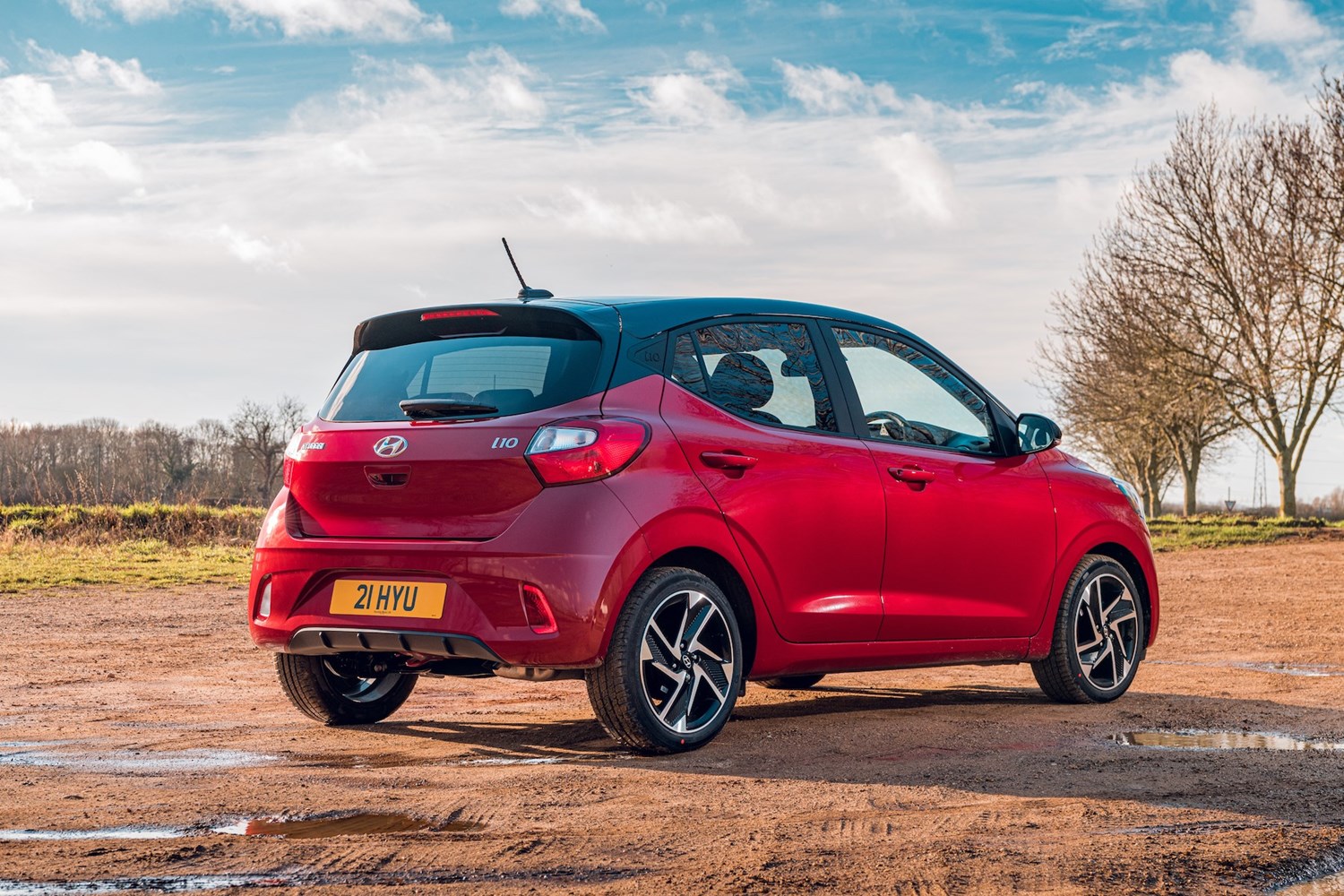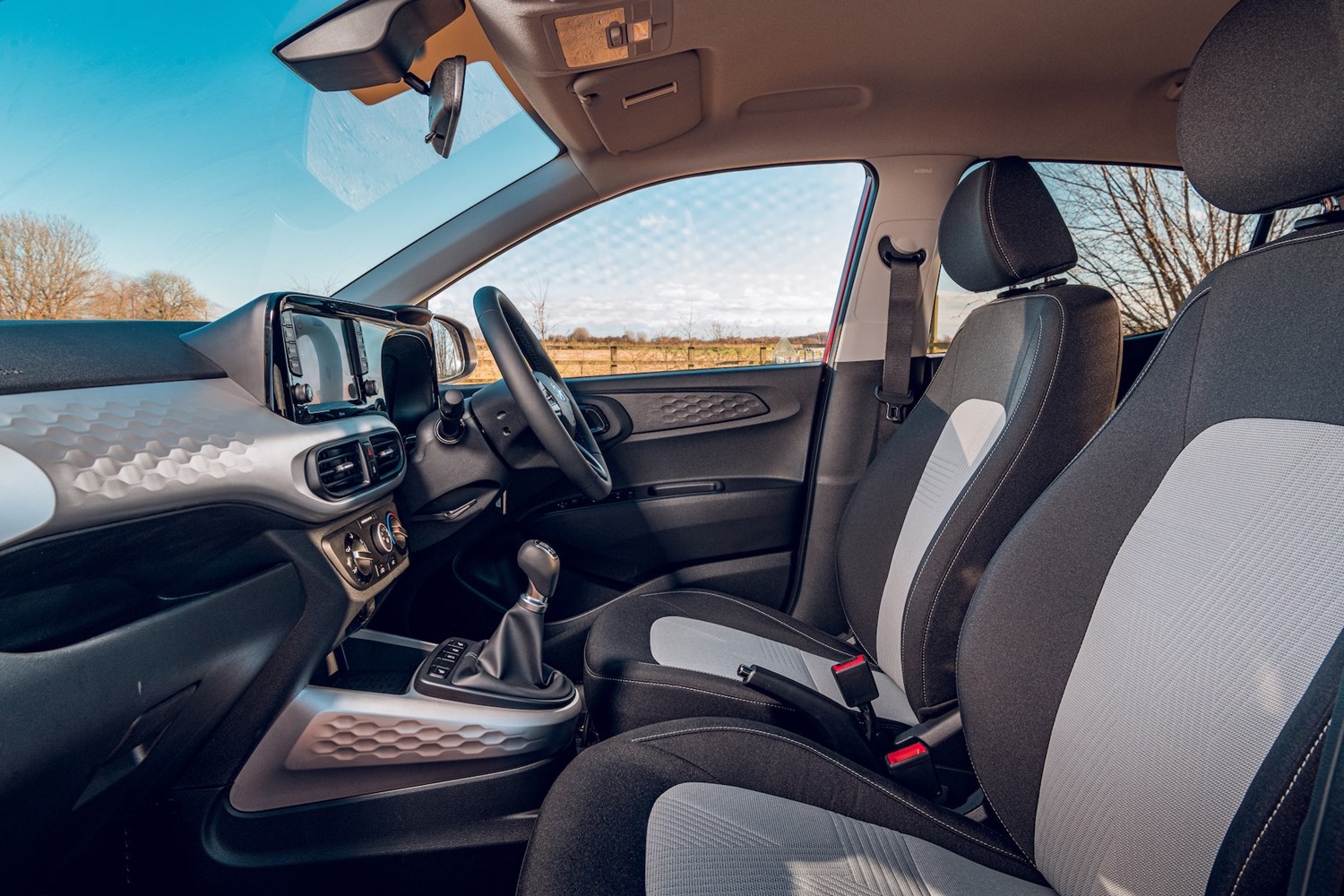Model Review
The first generation i10 was a hugely successful car for Hyundai, being launched at the same time as the government-backed scrappage scheme, which propped up new cars sales during the global financial crisis.
It was the car that was partly responsible for making Hyundai a household name, with the i10 going more-or-less overnight from a not especially popular car of the UK’s top 10 selling models. All first-generation i10s were built at Hyundai’s new Chennai plant in India.
The model had a facelift in 2010, and was replaced by the second-generation i10 in 2014, which this time was built in a factory in Turkey alongside the Indian plant.
The 2014 iteration was a larger, more mature car than its predecessor, yet it still offered great value for money in a compact city car package. The difference this time was that it offered a level of quality to match that offered by most European and Japanese brands.
A revised i10 appeared in the summer of 2018 as a facelift of the second-generation model, ahead of an all-new third-generation version that was launched in 2020. This brought with it a new modern look, improved cabin space and materials, the latest tech and new powertrains.

Latest model
The i10 rulebook went out of the window with this third-generation model and you can tell straight from the off that it’s bigger – in fact it’s now longer and wider. which means it bridges the gap between a city car and a supermini. The roof has been lowered too to give it a sportier stance on the road, but don’t let that fool you into thinking it’s going for the ‘keen driver’ audience.
One area Hyundai needed to correct with the previous i10 was the overall cabin which was a bit cramped and covered in cheap plastics, and this latest version is much better. Thanks to an increased wheelbase, there’s now more legroom for rear passengers plus the perceived quality has been improved too.
Standard equipment levels have increased too, along with the price tag, with all models now featuring air conditioning, electric rear windows and DAB radio.
Value for money
Prices for the latest version of the i10 start at £12,820 which might seem a lot for what is still essentially a city car. It is close to a thousand pounds more than the Volkswagen Up! And over £1,800 more than the Citroen C1 – both of which have just as much tech and personality, albeit in a slightly smaller package.
Considering its generous size and standard kit levels, it is attractively priced, though top-spec Premium and N-Line versions are expensive – costing upwards of £16,000, which is a lot of money for a city car.
If you’re looking at the second-generation version, then there are good deals to be had with prices under £5,000. One benefit of going for a slightly newer used car is that all models had a five-year, 100,000-mile warranty that stays with the car.
The first-generation offers really good value for money, with good versions available upwards of £1,695 – making it an ideal first car or affordable runabout.
Looks and image
The latest generation i10 has come a long way since it was first launched in the late noughties. It’s moved with the times, getting a more grown up image with smart headlamps and character lines that make it more sophisticated than the cheap and cheerful version it started as.
While it is bigger than the outgoing model, it’s got a lower roofline to give it a sportier demeanour, but, really, it isn’t noticeable on lower spec models. Opt for the top trim though with larger 16-inch alloys and a contrasting red or black roof and it does start to add a bit of character to what is a pretty uninspiring city car in base form, while a new N-Line grade gives the i10 an even sportier look.
Inside, the cabin is neatly laid out with all the controls well placed and easy to use, it’s just not as inspiring as some of the competition, and while perceived quality is improved, there are still some cheap, scratchy plastics on show.

Space and practicality
The latest generation i10 is bigger than the outgoing model, and is wider and longer – good news for anyone sitting in the back. Thanks to a 40mm longer wheelbase, taller passengers will get extra leg room, however with the addition of a lower roofline, this will mean six-footers may end up with a crooked neck on longer journeys. The increase in space means it’s better than most of its city car rivals, though.
The i10 is only available as a five door too, which means there are no issues getting in and out of the back. The door openings are nice and wide which helps when fitting child seats or helping gran out of the back.
The increase in size is good news not only for passengers, but also for anyone wanting to carry stuff in the back. It’s got one of the biggest boots in its class with 252 litres with the rear seats in place, expanding to 1,046 litres when you fold the 60:40 split folding seats down.
Engines
There are three petrol engines to choose from with the i10, but unlike rivals no hybrid or electric options.
The entry-level engine is a three-cylinder 1.0-litre petrol pumps out 66bhp and will be more than suitable for anyone looking for a city run about. It makes light work of nipping through gaps in the traffic and pulls away well enough, but when you take it out of the city it shows its limitations, especially at speed on motorways – 0-60mph taking 14.4 seconds.
Therefore as an all-rounder we’d recommend the more powerful 83bhp four-cylinder 1.2-litre petrol. It’s got much more pull from lower down the rev range meaning it can cope with whichever environment you throw at it, and reduces the 0-60mph time to 12.4 seconds.
Both these engines come mated to a five-speed manual gearbox, though a five-speed automatic is available. However. Unless you really need one, it’s worth avoiding as it’s one of the most disappointing automatics around, and takes a full three seconds more to reach 60mph than the manual.
If you choose the N-Line version, you can have a 99bhp turbocharged 1.0-litre, which is also mated to a five-speed manual gearbox, and can reach 60mph in 10.3 seconds and hit a top speed of 115mph.
Running costs
The i10 is not going to be an expensive car to run, thanks to its low capacity petrol engine offerings. As we mentioned there are just two engines to choose from with the 1.0-litre manual being the most economical averaging a claimed 56.5mpg and CO2 emissions of 114g/km of CO2. If you choose the automatic, it only marginally impacts economy, and the emissions are unchanged.
The 1.2-litre, while still being economical, is marginally thirstier than the 1.0-litre. It should average 52.3mpg and emissions of 130g/km of CO2. If you opt for the automatic, economy drops to just under 50mpg.

Things to look for
Overall the i10 has proved to be an excellent proposition, especially when it comes to reliability, and with a five-year warranty as standard, any issues are generally quickly rectified by the manufacturer.
Some early models have shown early signs of body corrosion, so it’s worth keeping an eye out for that if you’re looking for an older used version.
Rivals
There are some extremely competent rivals in the city car class, including from Hyundai’s sister company, Kia, whose Picanto has a lot in common with the i10. Other key competitors include the Citroen C1, Peugeot 108, Vauxhall Adam, Skoda Citigo, Volkswagen Up!, Seat Mii and Renault Twingo.
But where the i10 now bridges the gap between city car and supermini, it could also be worth considering as a smaller, cheaper option to rivals like the Vauxhall Corsa, Volkswagen Polo, Peugeot 208 and Renault Clio.
Depreciation
With a relatively low starting price, depreciation for most city cars is fairly slow compared to larger models and the i10 is no exception. It should retain approximately 40-45 per cent of its value after three years, depending on model and engine. Higher spec ‘Premium’ models will depreciate more quickly, as used city car buyers tend to shop on price rather than specification.





